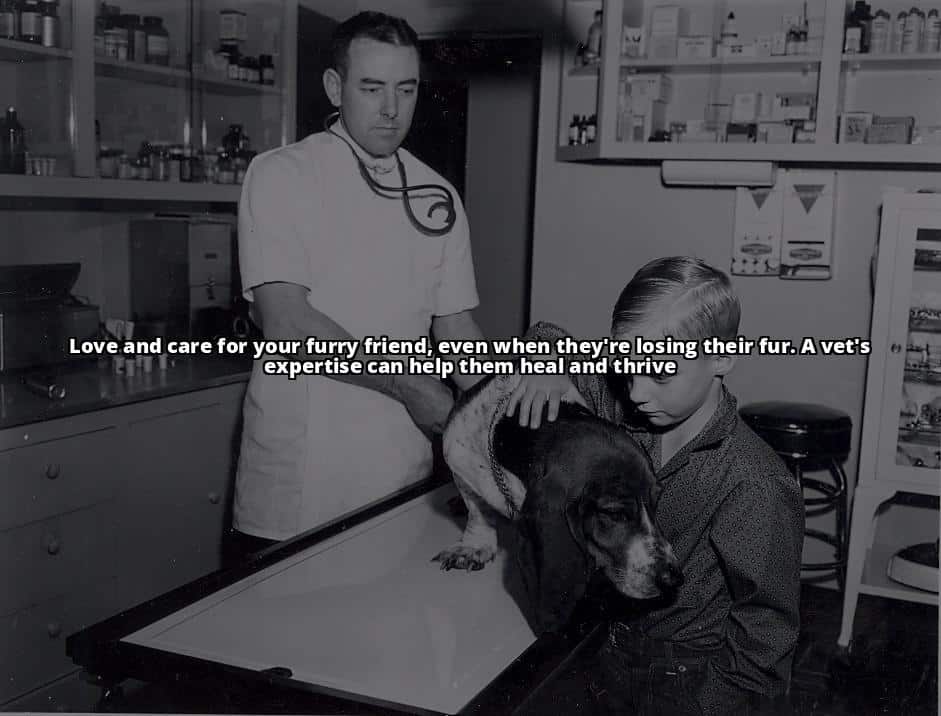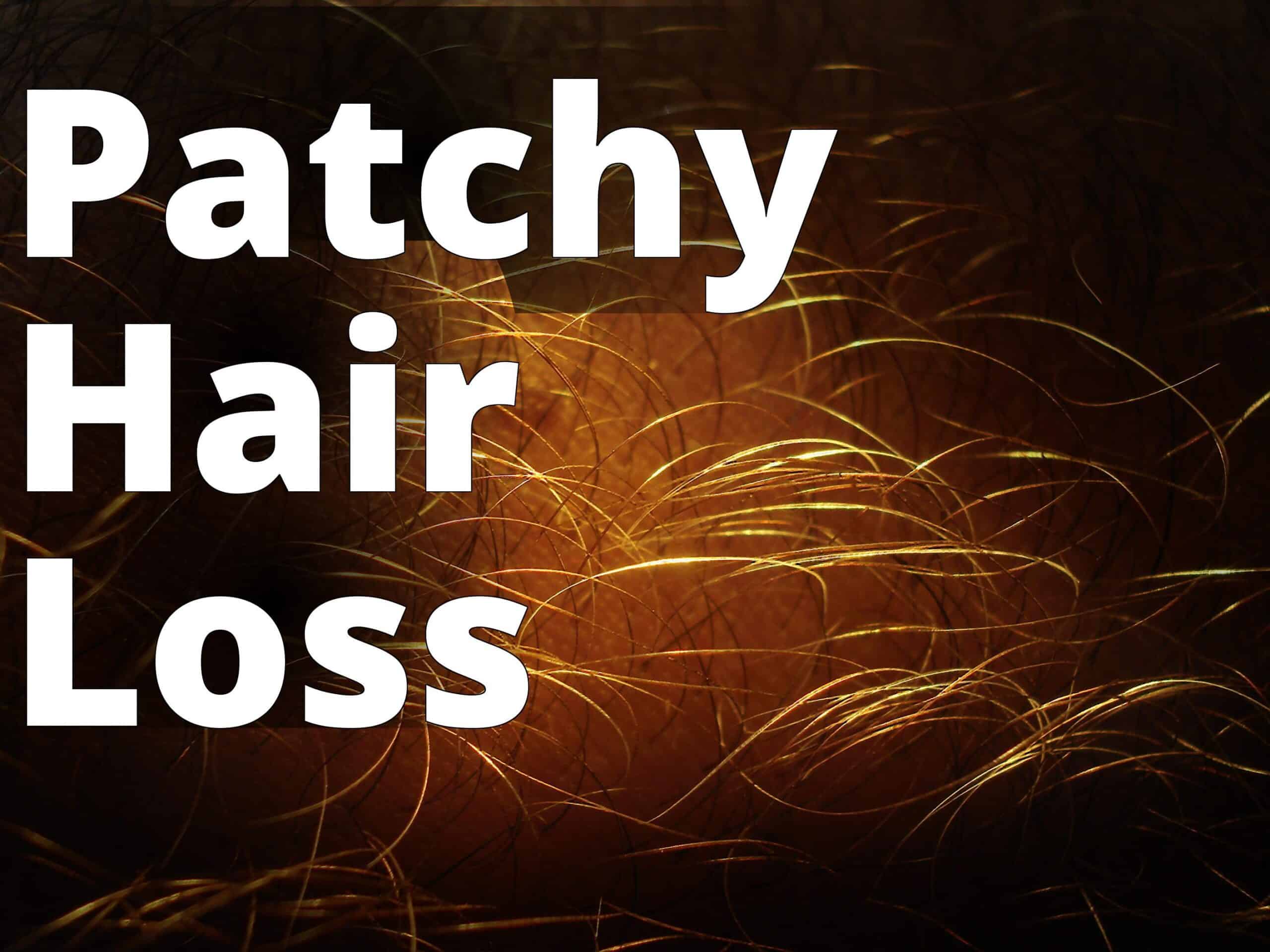Picture this: You’re stroking your fur-baby, and your hand comes away with more hair than seems healthy. You’re not alone. As a seasoned dog owner, I’ve navigated the choppy waters of canine alopecia, and let me tell youit can be more perplexing than trying to understand why dogs hate the mailman. Dog losing hair in patches isn’t just an aesthetic issue; it’s a billboard signaling that something’s amiss with your four-legged friend.
So, let’s dive nose-first into the hairy situation at handwhy your loyal companion might be losing their luscious coat and what you can do to turn the tide.
Understanding Hair Loss in Dogs
By reading this article, you will learn:
– Common causes of hair loss in dogs such as allergies, parasites, and hormonal imbalances.
– Symptoms of hair loss in dogs, including itching, redness, and skin infections.
– Home remedies for dog hair loss, like a balanced diet, regular grooming, and using oatmeal baths.
What Are the Most Common Causes of Hair Loss in Dogs?
Hair loss in dogs, or canine alopecia, can stem from a doggie smorgasbord of causes. Understanding them is your first step to remedying the situation.

Allergies: Just like us, dogs can be allergic to foods, dust mites, and pollens. Allergies can cause itching and inflammation, leading to hair loss. And yes, I’ve seen my dog, Buster, scratch himself into a bald state over what turned out to be a chicken allergy.
Parasites: The mere mention of fleas, ticks, and mites should make any dog owner itch. These critters can cause mange, leading to patchy hair loss. Believe me, spotting a tick on your dog is as alarming as finding out your favorite show has been canceled right before the season finale.
Hormonal Imbalances: Conditions like hypothyroidism or Cushing’s disease can cause symmetrical hair loss without much itchiness. When my dog, Sadie, started sporting less fur than usual, a blood test revealed hypothyroidism. Medication became her new best friend.
Infections: Bacterial or fungal infections, such as ringworm, can make your dog’s hair fall out in circular clumps. It’s as round and as obvious as a bullseye.
Stress or Poor Nutrition: Ever noticed your dog shedding more during a move or after switching foods? Stress and diet can lead to hair loss, too. It’s important to keep their emotional and nutritional needs as balanced as their diet.
Genetics: Sometimes, it’s just in the genes. Certain breeds are predisposed to pattern baldness. Look at the Chinese Crested; it’s like nature’s version of a punk rocker.
Immune Disorders: When your dog’s immune system gets its wires crossed, it may attack the hair follicles, resulting in hair loss. It’s an internal battle, unseen but impactful.
Insider Tip: Start with a close inspection of your dog’s skin. Look for signs of redness, dandruff, or parasites. Sometimes the cause of hair loss is literally crawling on the surface.
What Are the Symptoms of Hair Loss in Dogs?
Symptoms can range from obvious bald patches to more subtle thinning.

Itching and Scratching: If your canine companion is constantly scratching, they might as well have a neon sign flashing “hair loss in progress.”
Redness and Inflammation: The skin might look angrier than a cat on bath day.
Dandruff: Yes, dogs can have dandruff, too. It’s not just a human affliction.
Bad Skin Odor: When your pup’s skin smells worse than their breath, it’s a sign that something’s off.
Insider Tip: Regular grooming can help you spot these symptoms early. Brushing not only keeps your dog’s coat shiny but also helps distribute natural oils, which can prevent skin issues.
How Is Hair Loss in Dogs Diagnosed?
Veterinarians are the Sherlock Holmes of the animal world. They’ll start with a history and physical exam, and they might just find the clue in the form of fleas or ticks. If the cause isn’t jumping off the skin, they might do skin scrapings, blood tests, or even a biopsy to get to the bottom of the problem.

Insider Tip: Keep a health diary for your dog. Noting changes in behavior, diet, or environment can be crucial cues for your vet.
How Is Hair Loss in Dogs Treated?
Treatment is as varied as the causes. It could be as simple as a flea medication or as complex as lifelong hormone therapy.
Medications: These can range from antibiotics for infections to anti-inflammatory drugs for allergies.
Topical Treatments: Medicated shampoos or ointments can soothe skin and promote hair growth.
Therapeutic Diets: Sometimes, the way to your dog’s coat health is through their stomach.
Surgery: In extreme cases, like severe infections or tumors, surgery might be required.
Insider Tip: Patience is key. Some treatments take time to show results, so don’t expect overnight miracles.
Can I Prevent My Dog From Losing Hair?
Prevention is the guardian angel of dog health.
Proper Nutrition: A balanced diet is as crucial for your dog’s fur as the right conditioner is for your hair.
Regular Grooming: DIY dog grooming isn’t just a cost-saver; it’s a health check disguised as bonding time.
Pest Control: Effective flea and tick prevention can save your dog from scratching their way to baldness.
Regular Vet Check-ups: Catching issues early can prevent a mountain of hair (loss) trouble.
Insider Tip: Investing in durable dog accessories, like a quality brush, can make a world of difference in your dog’s coat health.
What Is the Prognosis for a Dog With Hair Loss?
The prognosis depends on the cause. Many conditions are treatable, and your dog can regain their full, fluffy glory. The key is early detection and treatment. It’s not always a walk in the park, but with the right care, your dog can return to their pre-alopecia splendor.
Insider Tip: Stay positive and follow your vet’s advice. Your attitude can influence your dog’s recovery journey.
Understanding the Emotional Impact of Hair Loss on Pets
As a pet owner, I experienced first-hand the distressing effects of hair loss on my dog, Max. Watching him lose patches of fur and witnessing his discomfort was a challenging and emotional experience for both of us.
Identifying the Signs of Stress
Initially, I noticed that Max’s behavior changed as his hair loss progressed. He became increasingly restless and irritable, often scratching and licking the affected areas excessively. I realized that his hair loss was not only a physical issue but also had an emotional impact on him.
Seeking Professional Help
After attempting a few home remedies without success, I sought the expertise of a veterinarian. The vet conducted a thorough examination and diagnosed Max with a skin condition that was causing the hair loss. Understanding the underlying cause was crucial in addressing the issue effectively.
Implementing Preventive Measures
With the guidance of the vet, I learned about preventive measures to maintain Max’s coat health, such as regular grooming and a balanced diet. These simple yet effective steps played a significant role in preventing further hair loss and improving Max’s overall well-being.
My experience with Max taught me the importance of addressing the emotional impact of hair loss on pets and seeking professional guidance to provide them with the best possible care.
What Are the Best Home Remedies for Dog Hair Loss?
Home remedies can be helpful, but they’re not a substitute for veterinary care.
Omega Fatty Acids: Adding omega-3 and omega-6 supplements to your dog’s diet can improve skin health.
Coconut Oil: This natural moisturizer can soothe the skin and reduce dandruff.
Aloe Vera: Known for its healing properties, aloe can calm irritated skin.
Regular Baths: Using a gentle, hypoallergenic shampoo can help keep your dog’s skin clean and healthy.
Insider Tip: Always patch-test any new product on a small area of your dog’s skin to ensure they don’t have a reaction.
In the end, your dog’s hair loss journey might be a bumpy one, filled with vet visits, medication trials, and lots of love and patience. But remember, each strand of hair lost can lead to a stronger bond as you navigate this challenge together. As an engaged pet owner, your proactive approach to your dog’s health is their best chance at a hairy happily ever after. And let’s be honest, a dog with a full coat is more than just a pretty face; it’s the embodiment of health and happiness, trotting alongside you on life’s winding path.
FAQs
Who should I contact if my dog is losing hair in patches?
You should contact a veterinarian to examine your dog’s condition.
What could be causing my dog to lose hair in patches?
Various factors such as allergies, parasites, or hormonal imbalances could be the cause.
How can I help my dog if it’s losing hair in patches?
Provide a balanced diet, regular grooming, and consult a vet for treatment options.
Isn’t it normal for dogs to shed hair in patches?
While some shedding is normal, excessive hair loss may indicate an underlying issue.
Dr. Emma Wilson, DVM, has over 10 years of experience in veterinary medicine, with a special focus on dermatology and internal medicine in pets. She completed her Doctor of Veterinary Medicine degree at the University of California, Davis, and went on to pursue a residency in veterinary dermatology at the Animal Dermatology Clinic. Dr. Wilson has published numerous research articles on skin conditions and hair loss in dogs, with her work being featured in prestigious veterinary journals such as the Journal of the American Veterinary Medical Association and the Veterinary Dermatology. She is dedicated to educating pet owners about common pet health issues and providing practical, evidence-based solutions. Dr. Wilson’s expertise in diagnosing and treating hair loss in dogs has made her a trusted resource in the veterinary community.
Facebook
Pinterest
Twitter
LinkedIn


